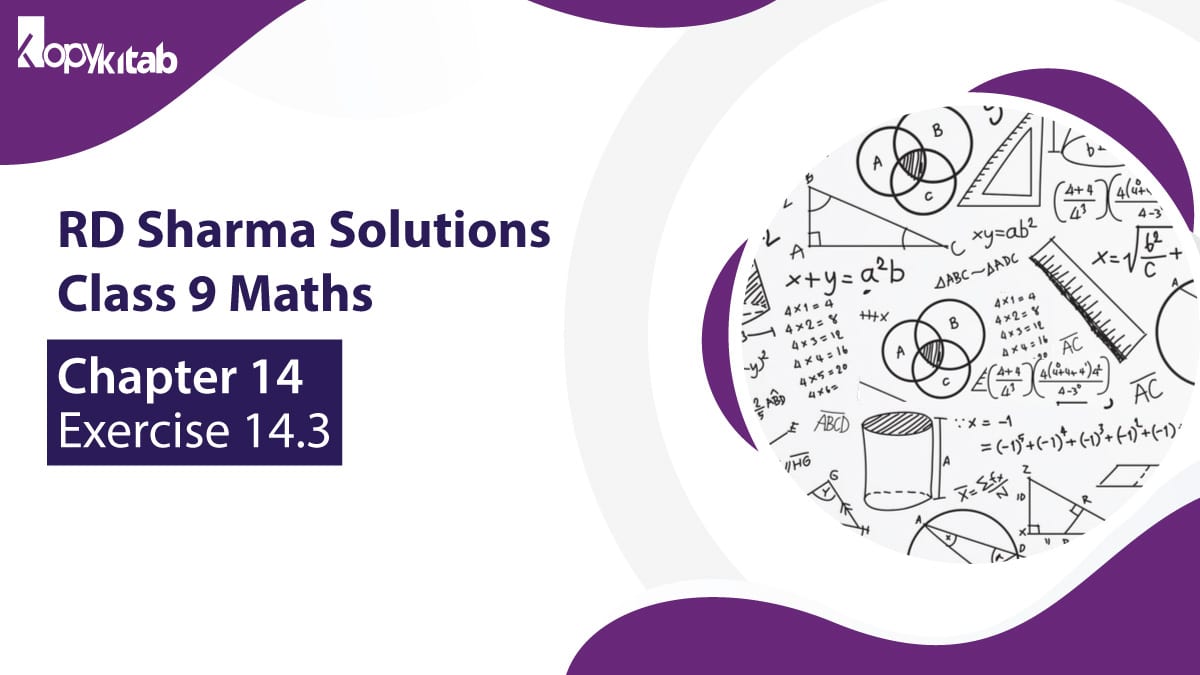RD Sharma Chapter 14 Class 9 Maths Exercise 14.3 Solutions is about the important theorems of quadrilaterals and Conditions for a Quadrilaterals to be a Parallelogram. This article is about the theorem of quadrilaterals like- If the diagonals of a quadrilateral bisect each other, A quadrilateral is a parallelogram if it is one pair of opposite sides are equal and parallel, Properties of Rectangle, Rhombus, and a Square, etc. It will become easy to understand if students will do practice on a daily basis with revision.
Apart from the definitions and other important details, we have given the RD Sharma Chapter 14 Class 9 Maths Exercise 14.3 Solutions PDF below. Practice with the various types of questions related to the exercise. The PDF is prepared by our experts. They have given informative stepwise solutions for each problem mentioned. Learners can score well in the exam by doing regular practicing through the PDF.
Learn about RD Sharma Class 9 Chapter 14- Quadrilaterals
Download RD Sharma Chapter 14 Class 9 Maths Exercise 14.3 Solutions PDF
Solutions for Class 9 Maths Chapter 14 Quadrilaterals Exercise 14.3
Important Definitions RD Sharma Chapter 14 Class 9 Maths Exercise 14.3 Solutions
The definitions and examples are provided for all the theorems of a quadrilateral given below-
- Conditions for a Quadrilaterals to be a Parallelogram
- Important theorems statements-
- A quadrilateral is a parallelogram if its opposite edges/ sides are the same.
- A quadrilateral is a parallelogram if it is opposite/ reverse angles are the same.
- If the diagonals of a quadrilateral bisect (divide) each other, then the quadrilateral is a parallelogram.
- A quadrilateral is a parallelogram if one pair (set) of opposite edges is equivalent and parallel.
- Properties of Rectangle, Rhombus, and a Square
- Theorems on Rectangle, Rhombus and a Square
Examples of RD Sharma Chapter 14 Class 9 Maths Exercise 14.3 Solutions
Here are some examples based on the theorems of quadrilaterals and Conditions for a Quadrilaterals to be a Parallelogram below-
Ques 1- PQRS is a rectangle with ∠PQS = 40°. Find ∠SQR.
Solution-
Each angle of a rectangle = 90°
So, ∠PQR = 90°
∠PQS = 40° (given)
Now, ∠PQS + ∠SQR = 90°
40° + ∠SQR = 90°
or ∠SQR = 50°
Ques 2- In a parallelogram PQRS, if ∠Q = 135°, determine the measures of its other angles.
Solution-
Given: In a parallelogram PQRS, if ∠Q = 135°
Here, ∠P = ∠R, ∠Q = ∠S and ∠P + ∠Q = 180°
∠P + 135° = 180°
∠P = 45°
Answer-
∠P = ∠R = 45°
∠Q = ∠S = 135°
Ques 3- In a parallelogram PQRS, determine the sum of angles ∠R and ∠S.
Solution-
In a parallelogram, PQRS, ∠R, and ∠S are consecutive interior angles on the same edges/ side of the transversal RS.
So, ∠R + ∠S = 180°
Frequently Asked Questions (FAQs) of RD Sharma Chapter 14 Class 9 Maths Exercise 14.3 Solutions
Ques 1- What are the three characteristics of a quadrilateral?
Ans- The three important characteristics of a quadrilateral are-
- Four sides
- Four Vertices
- The total of the interior angles should be equivalent to 360° (360 degrees)
Ques 2- What are the five ways to prove a quadrilateral is a parallelogram?
Ans- Following criteria prove a quadrilateral is a parallelogram-
- If a quadrilateral has one pair of edges/ sides that are both congruent and parallel.
- If all opposite sides (edges) of the quadrilateral are congruent.
- Both pairs of opposite (reverse) sides are parallel.
- Reverse (Opposite) angles are congruent.
- Diagonals bisect (divide).
Ques 3- Is a quadrilateral a square?
Ans- Yes, a quadrilateral is a square with four equal sides/ edges and angles. Also, a regular quadrilateral as both its sides and angles are similar. Like a rectangle, a square has four (4) angles of 90° (90 degrees) each. It can also be observed as a rectangle whose two adjacent sides are similar.
